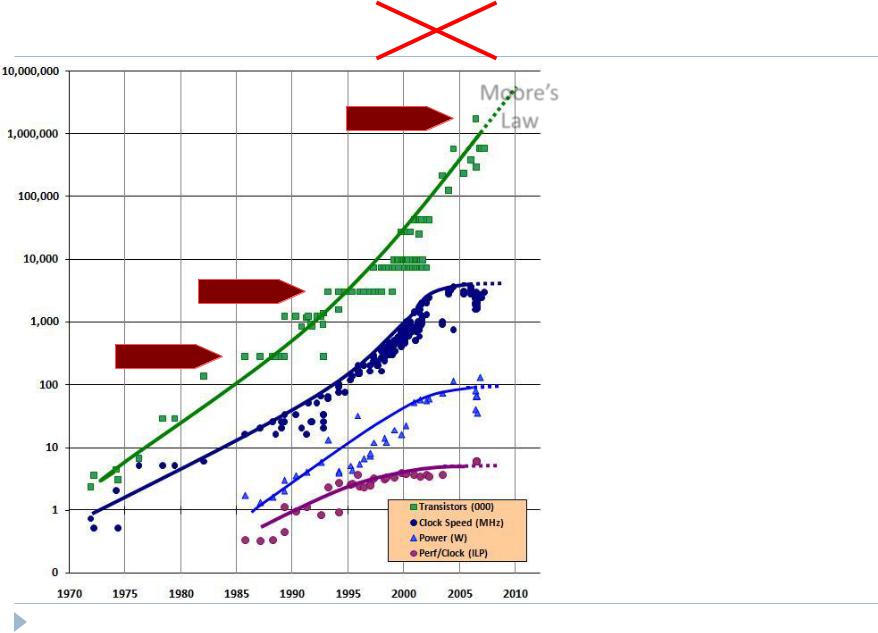
Лупин / Лекции_2007 / ПО и параллельная революция intel_070925
.pdf
Software and the
Concurrency Revolution
Herb Sutter
Software Architect
Developer Division
Microsoft Corporation


A: The world’s fastest supercomputer, with up to
4 processors, 128MB RAM, 942 MFLOPS (peak).

A: The world’s fastest supercomputer, with up to
4 processors, 128MB RAM, 942 MFLOPS (peak).
Q: What is a 1984 Cray X-MP? (Or a fractional 2005 vintage Xbox…)

Truths
Consequences
Futures

The Last Slide First
Although driven by hardware changes, the concurrency revolution is primarily a software revolution.
Parallel hardware is not “more of the same.”
It’s a fundamentally different mainstream hardware architecture, even if the instruction set looks the same. (But using the same ISA does give us a great compatibility/migration story.)
Software requires the most changes to regain the “free lunch.”
The concurrency sea change impacts the entire software stack: Tools, languages, libraries, runtimes, operating systems.
No programming language can ignore it and remain relevant.
(Side benefit: Responsiveness, the other reason to want async code.)
Software is also the gating factor.
We will now do for concurrency what we did for OO and GUIs.
Beyond the gate, hardware concurrency is coming more and sooner than most people yet believe.

Each Year We Get Faster More Processors
Moore’s
Montecito Law
Intel CPU Trends
(sources: Intel, Wikipedia, K. Olukotun)
Pentium
386
Historically: Boost singlestream performance via more complex chips.
Now: Deliver more cores per chip (+ GPU, NIC, SoC).
The free lunch is over for today’s sequential apps and many concurrent apps. We need killer apps with lots of latent parallelism.
A generational advance >OO is necessary to get above the “threads+locks” programming model.

Each Year We Get Faster More Processors
1.7Bt ÷ 4.5Mt = ~100 P55Cs + 16 MB L3$ Moore’s
Montecito Law
Intel CPU Trends
(sources: Intel, Wikipedia, K. Olukotun)
Pentium
386
Historically: Boost singlestream performance via more complex chips.
Now: Deliver more cores per chip (+ GPU, NIC, SoC).
The free lunch is over for today’s sequential apps and many concurrent apps. We need killer apps with lots of latent parallelism.
A generational advance >OO is necessary to get above the “threads+locks” programming model.

Educational State of the Union: Sep 2007
We have achieved general awareness.
Most people know that “the free lunch is over” for sequential applications, and that the future is multicore and manycore.
But few people really yet believe the magnitude, speed, and gating factor of the change:
Magnitude: Comparable to the GUI revolution plus moving to a new hardware platform, simultaneously. Enabling manycore affects the entire software stack, from tools to languages to frameworks/libraries to runtimes.
Speed: (Recall: Intel could build 100-Pentium chips today if they wanted to.) 100-way HW concurrency could be available in commodity desktops as soon as the year …
Gating factor: … manycore-exploiting software is available.

Truths
Consequences
Futures
